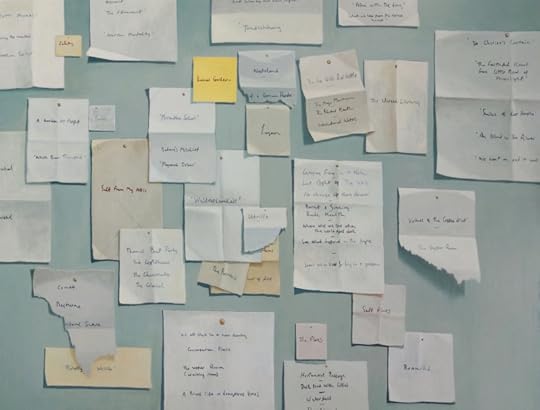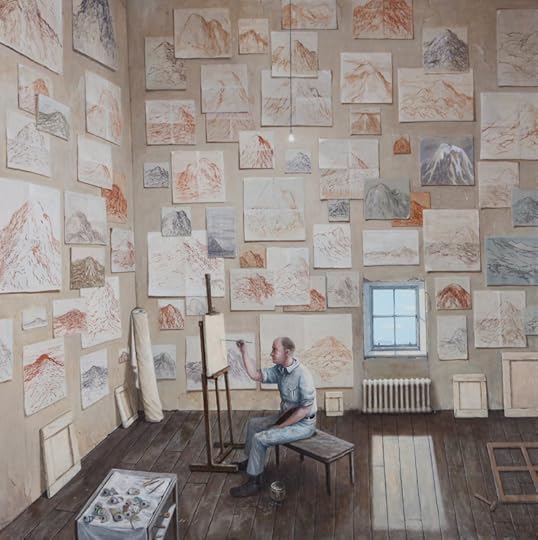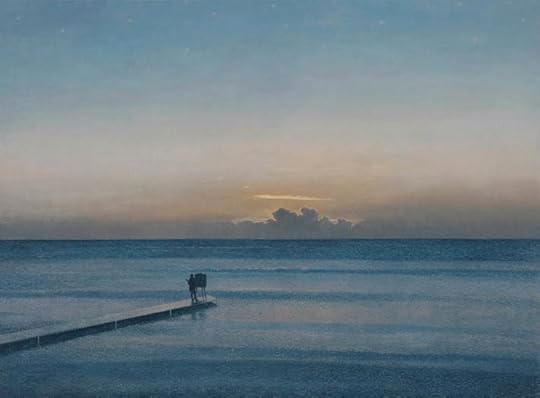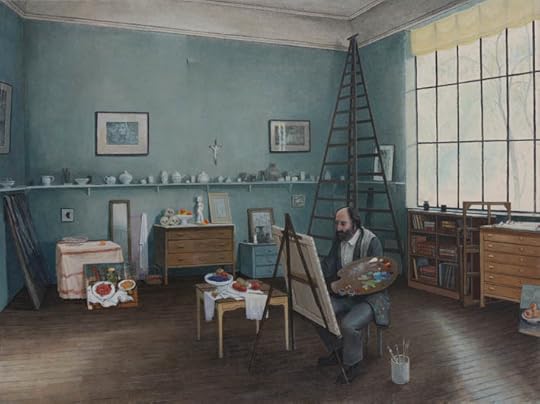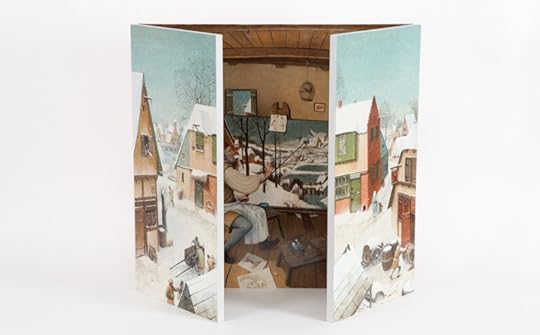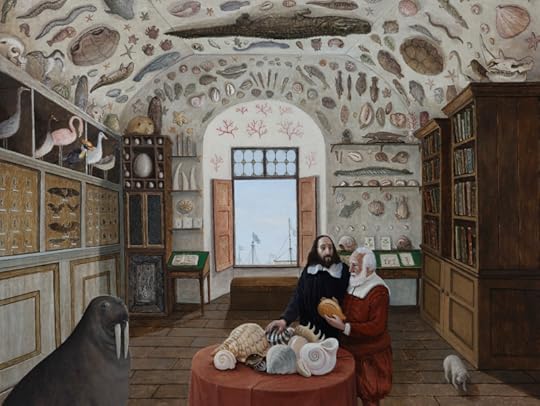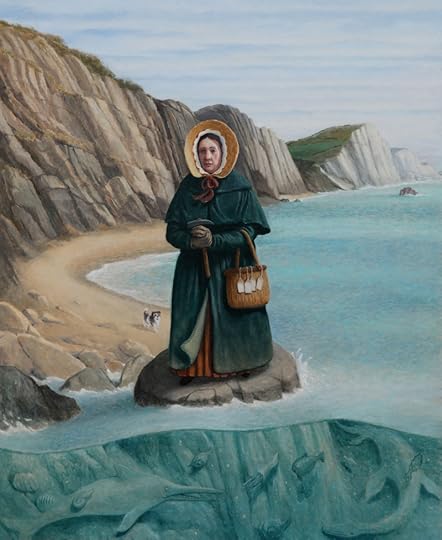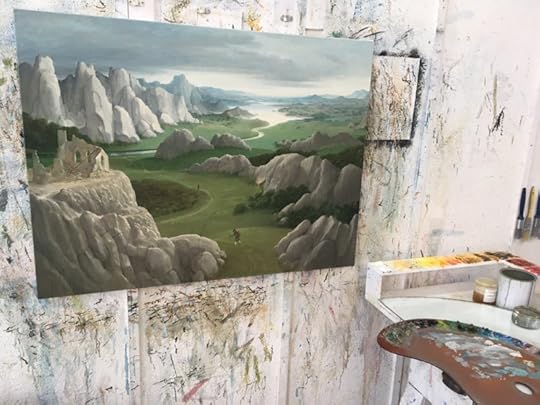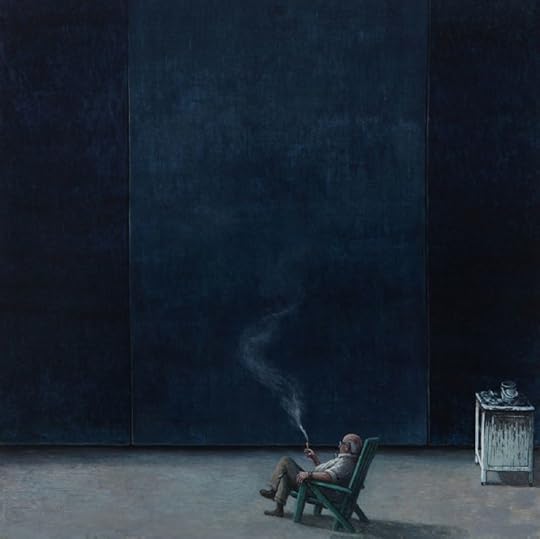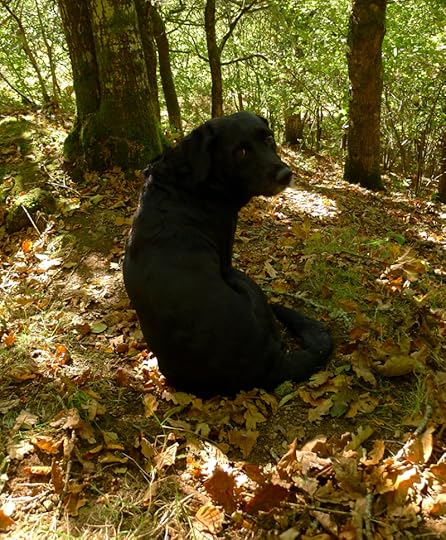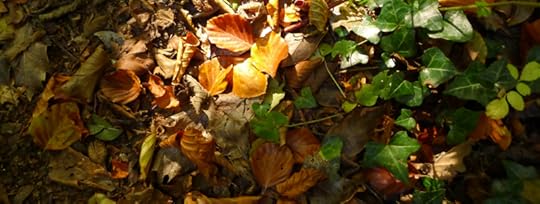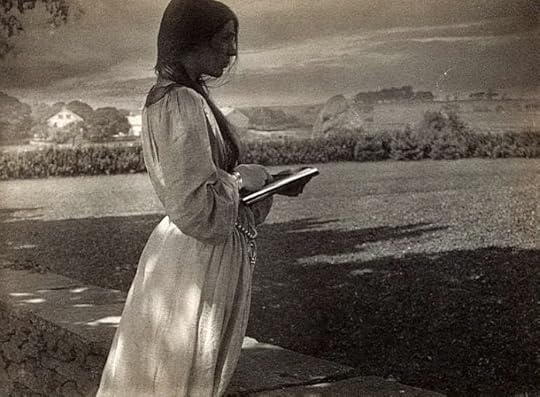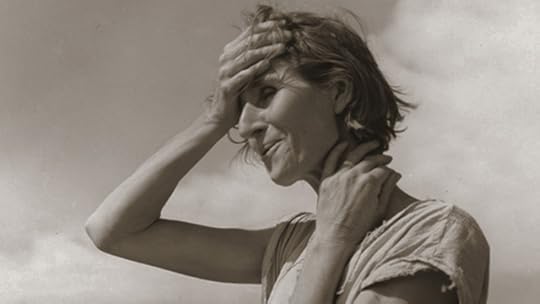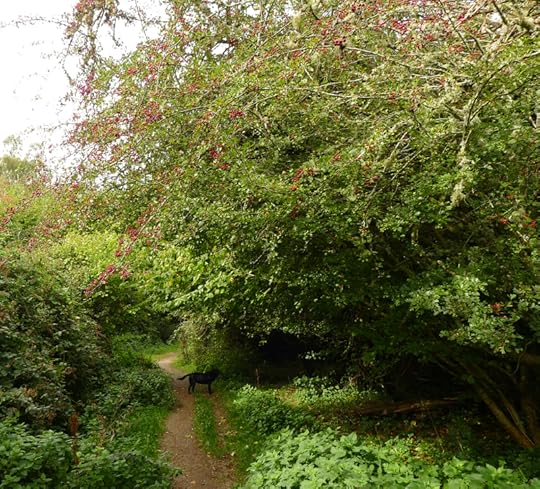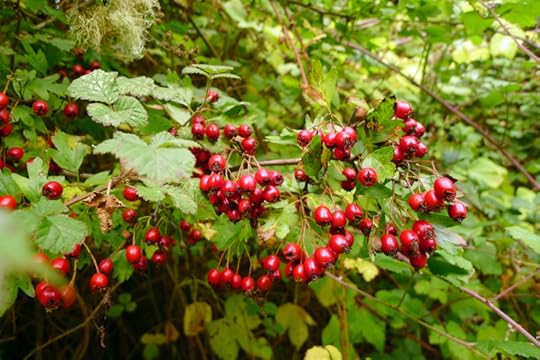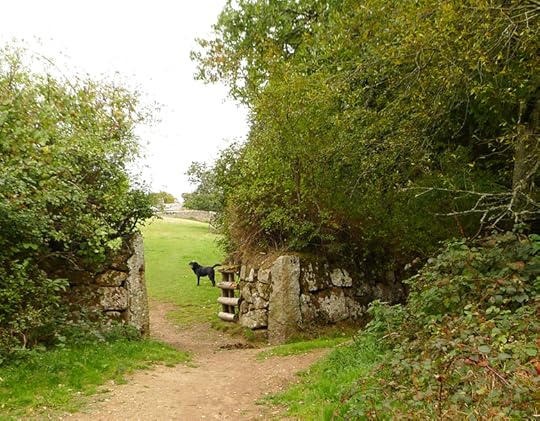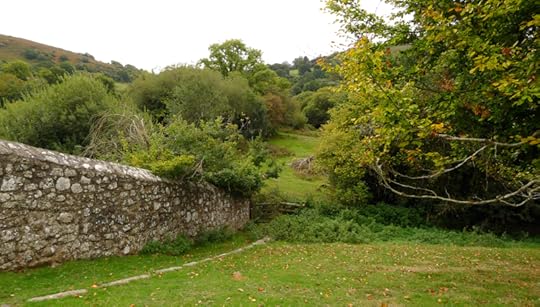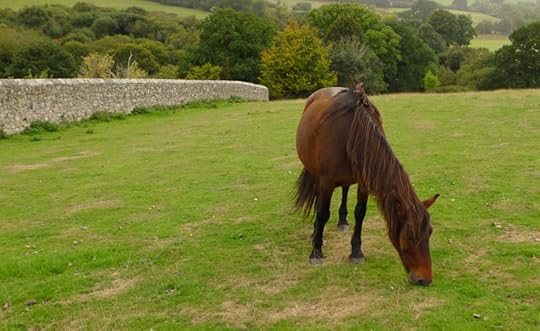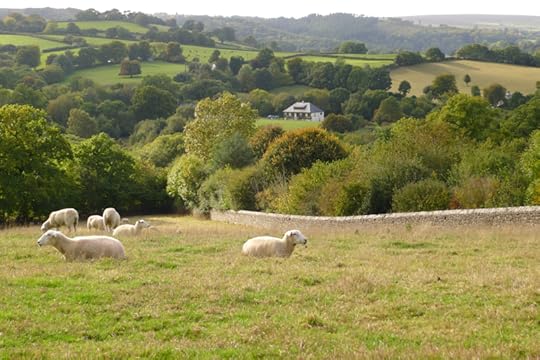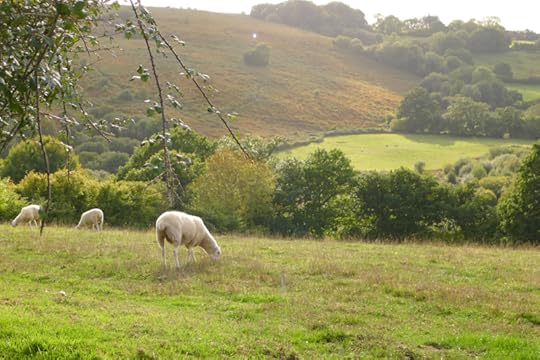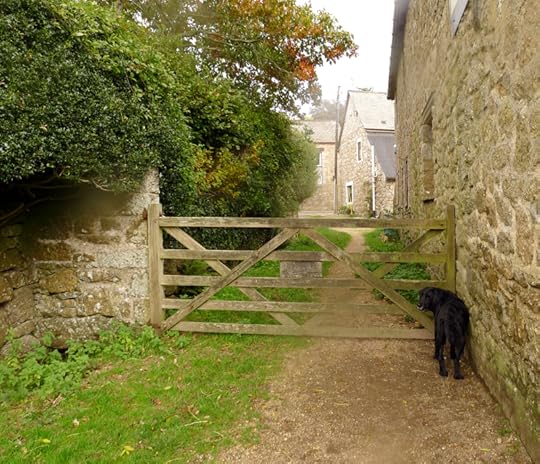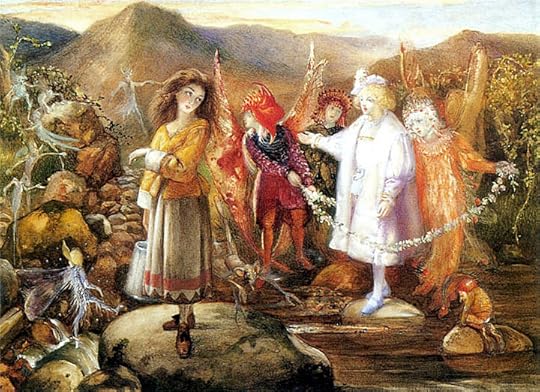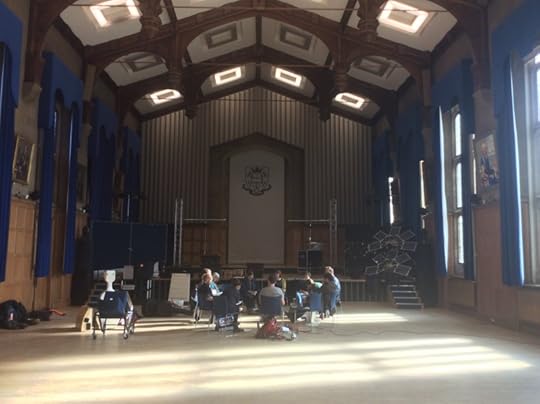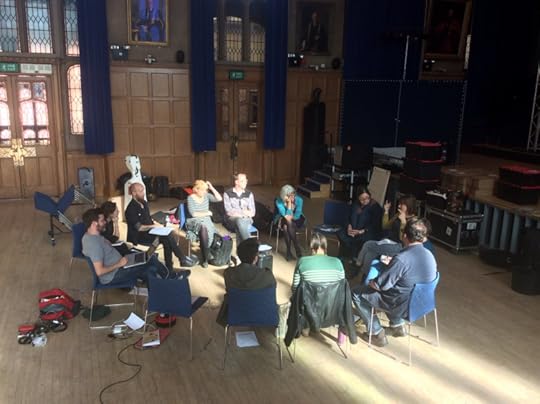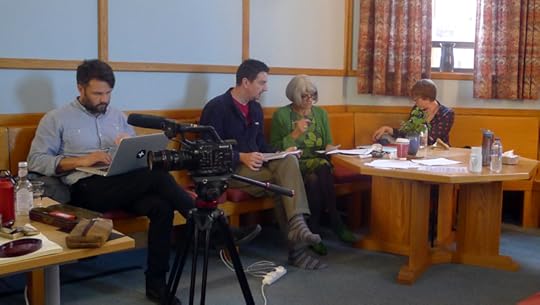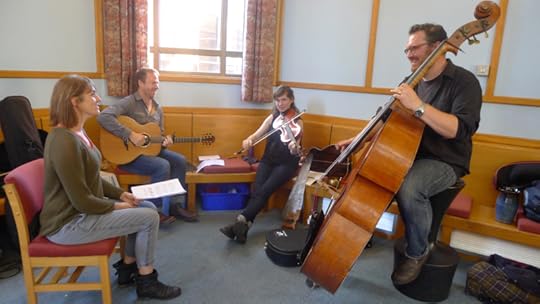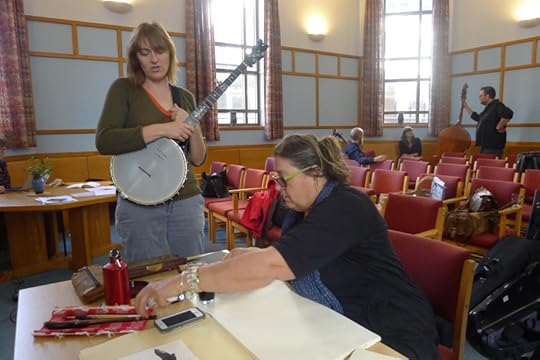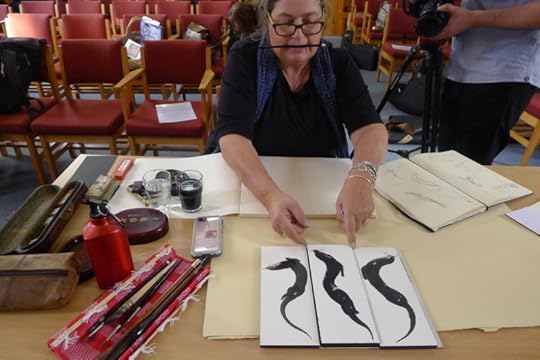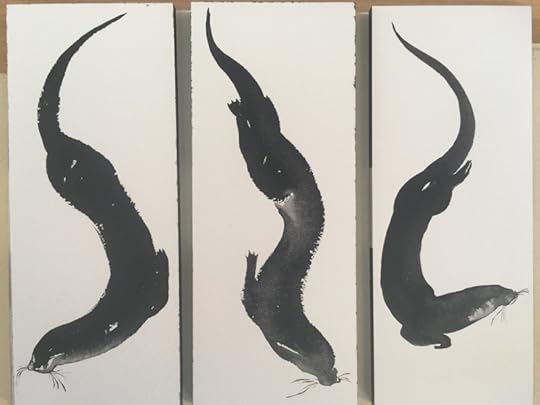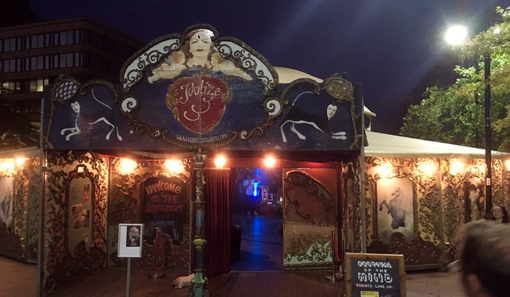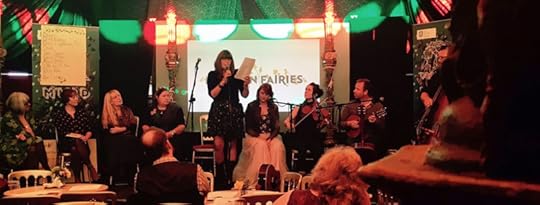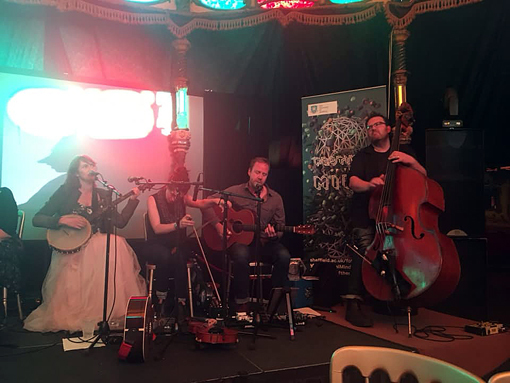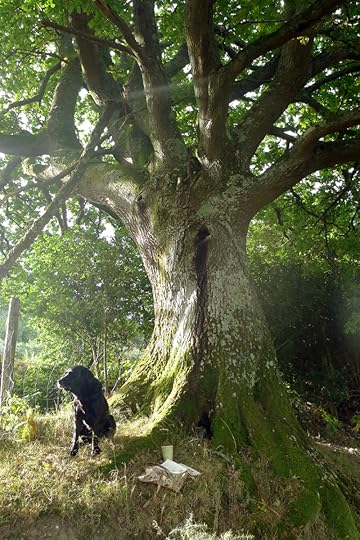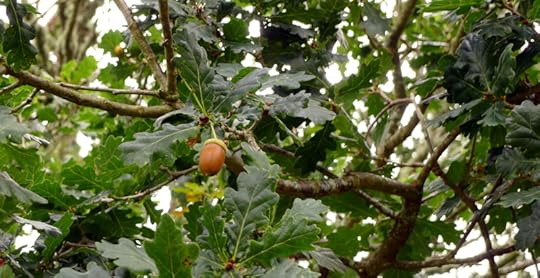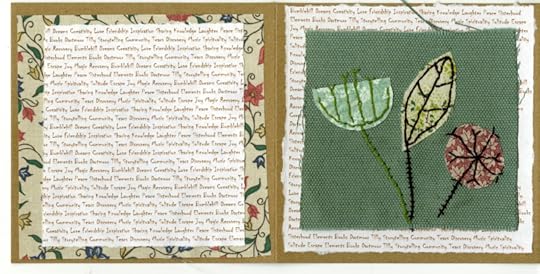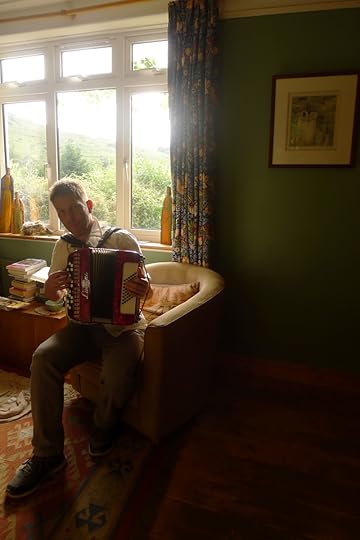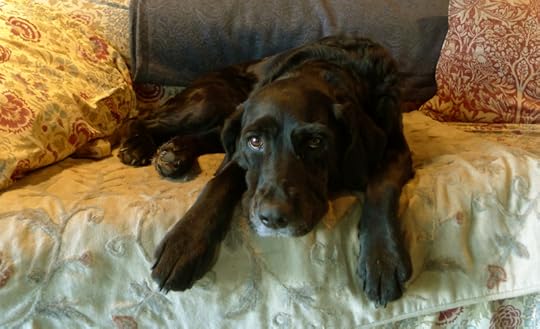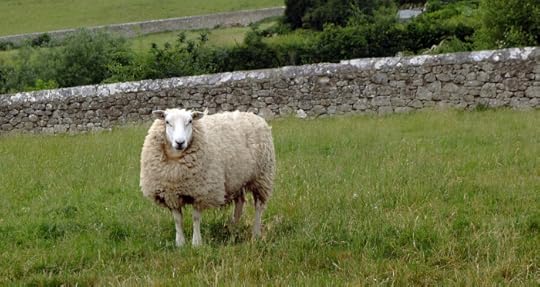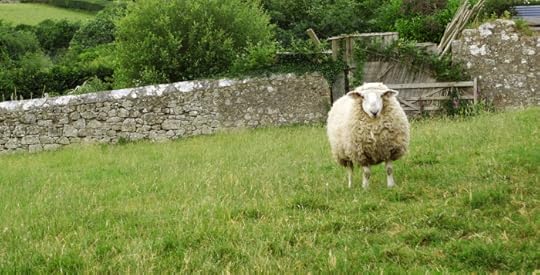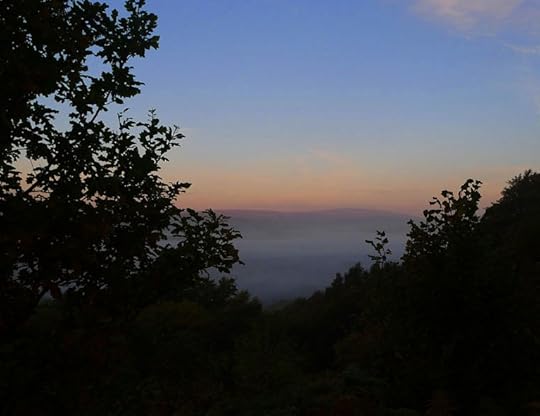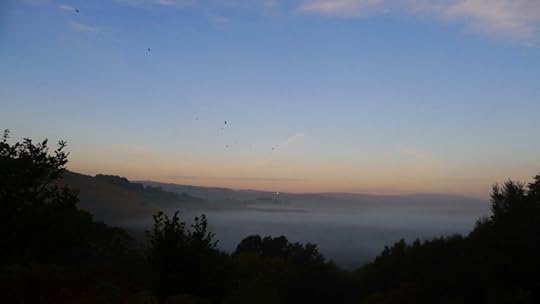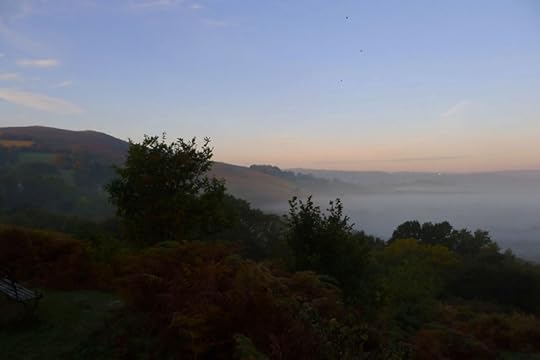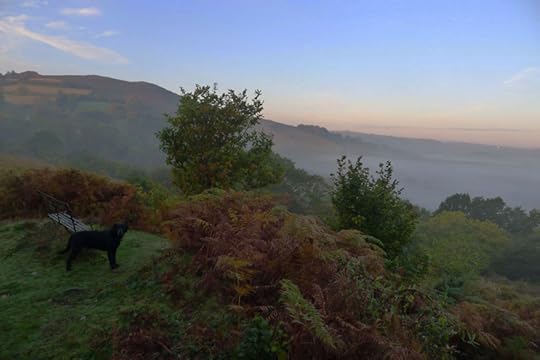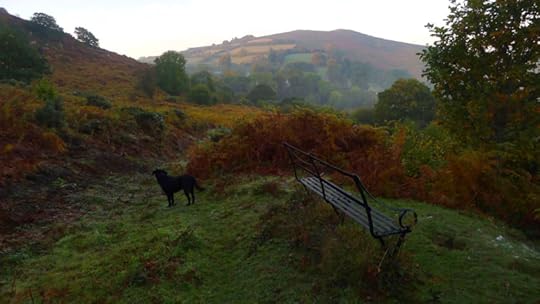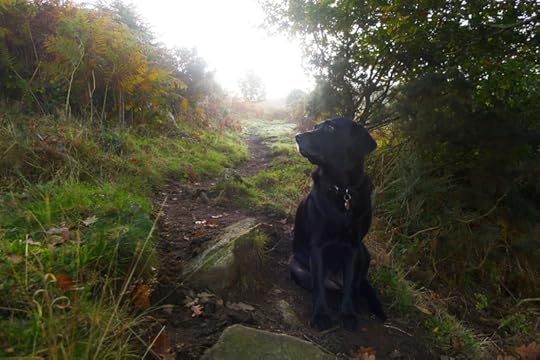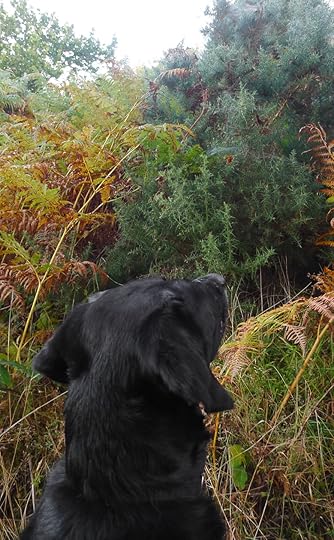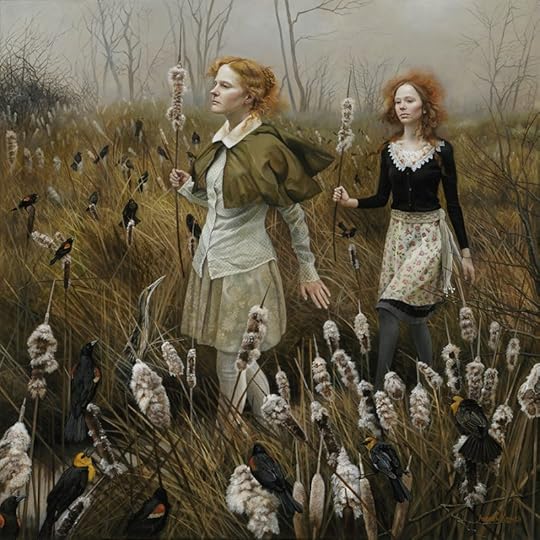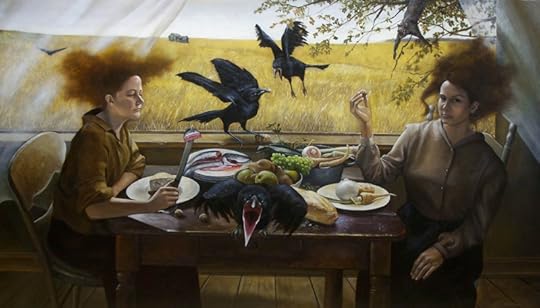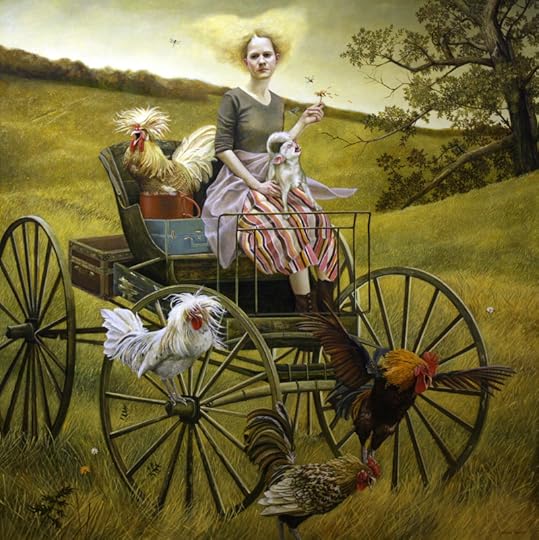Terri Windling's Blog, page 72
October 10, 2018
What is the point of writing?
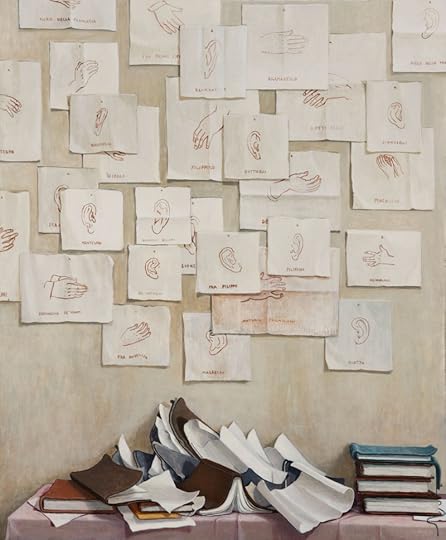
From "On Becoming an American Writer" by Alexander Chee:
"My generation of writers -- and yours, if you're reading this -- lives in the shadow of Auden's famous attack on the relevance of writing to life, when he wrote that 'poetry makes nothing happen.' I had heard that remark repeated so often and for so long I finally went looking for its source, to try to understand what he really meant by it....Auden wrote the line in an elegy for Yeats. And Yeats, it should be said, was a hero of Auden's. To read the whole poem is to know he meant, if not the opposite of what this line is often used to say, something at least more subtle: an ironic complaint. This isn't even the sharpest line Auden wrote on the subject. But somehow, the line handed anyone who cared a weapon to gut the confidence of over fifty years' worth of writers in the West. As we face the inexorable creep of William F. Buckley's intellectual conservatism that used anti-intellectualism as its arrowhead, this attitude, that writing is powerless, is one that affects you even if you have never read that poem, much less the quote. Pundits, reviewers, and critics spit it out repeatedly, as often now as ever, hazing anyone who might imagine anything to the contrary."
What then is the point of American writing, Chee asks, particularly in these dark political times?
The point, he says, is "the point of samizdat, readers and writers meeting secretly all over the Soviet Union to share forbidden books, either written there or smuggled into the country. The point is the widow of Osip Mandelstam memorizing her husband's poetry while in the camps with him in the Soviet Union, determined that his poems make it to readers. The point of it is the possibility of being read by someone who could read it. Who could be changed, out past your imagination's limits. Hannah Arendt has a definition of freedom as being the freedom to imagine that which you cannot yet imagine. The freedom to imagine that as yet unimaginable work in front of others, moving them to still more action you can't imagine, that is the point of writing, to me. You may think it is humility to imagine your work doesn't matter. It isn't. Much the way you don't know what a writer will go on to write, you don't know what a reader, having read you will do."
I believe this is true even for those of us in the Fantasy and Mythic Art fields. Our stories may not be overtly political, but we work with the powerful tools of archetype and metaphor, and everything we put out into the world has the potential to touch the lives of others in ways we may never know.
Here's one instance that I do know about. Years ago I published an anthology of fairy-tale-inspired stories reflecting on the dark side of childhood. This was back in the days when child abuse was still a taboo subject, little discussed. A few years later, I received a letter forwarded through my publisher. It was from a stranger, a lawyer, in the American south. He'd come across my book while staying in a house where there was little else to read -- and despite having scant interest in either fairy tales or fantasy, out of sheer boredom he gave it a try. The thing he was writing to tell me was that the book had changed the direction of his life. Haunted by those stories, he decided to volunteer his services to a child advocacy group -- and had recently left his corporate law firm to work in the service of traumatized children full time.
Such letters are incredibly precious, but rare. Most people do not write to authors or other artists whose works have had meaning for them. There are books that literally saved my life, yet I've never written to their creators to say so. Most of time we will never know where our work has gone, if it's reached the right readers or sank like a stone; we just cast it out like a message in a bottle*, hoping it will reach the right shore.
"Only in American do we ask our writers to believe they don't matter as as a condition of writing," says Chee. "It is time to end this. Much of my time as a student was spent doubting the importance of my work, doubting the power it had to reach anyone or to do anything of significance. I was already tired of hearing about how the pen was mightier than the sword by the time I was studying writing. Swords, it seemed to me, won all the time.
"By the time I found that Auden quote -- 'poetry makes nothing happen' -- I was more than ready to believe what I thought it was saying. But books were still to me as they had been when I found them: the only magic. My mother's most common childhood memory of me is of standing next to me trying to be heard over the voice on the page. I didn't really commit to writing until I understood that it meant making that happen for someone else. And in order to do that, I had to commit the chaos inside of me to an intricate order, an articular complexity.
"To write is to sell an escape ticket, not from the truth, but into it. My job is to make something happen in a space barely larger than the span of your hand, behind your eyes, distilled out of all I have carried, from friends, teachers, people met on planes, people I have only seen in my mind, all my mother and father ever did, every favorite book, until it meets and distills from you, the reader, something out of everything it finds in you. All of this meets along the edge of a sentence like this one, as if the sentence is a fence, with you on one side and me on the other....All of my life I have been told this isn't important, that it doesn't matter, that it could never matter. And yet I think it does. I think it is the real reason the people who would take everything from us say this. I think it's the same reason that when fascists come to power, writers are among the first to go to jail. And that is the point of writing."
As a teacher of writing himself now, Chee tells his students "that art endures past governments, countries, and emperors, and their would-be replacements. That art -- even, or perhaps especially, art that is dedicated somehow to tenderness...is not weak. It is strength. "
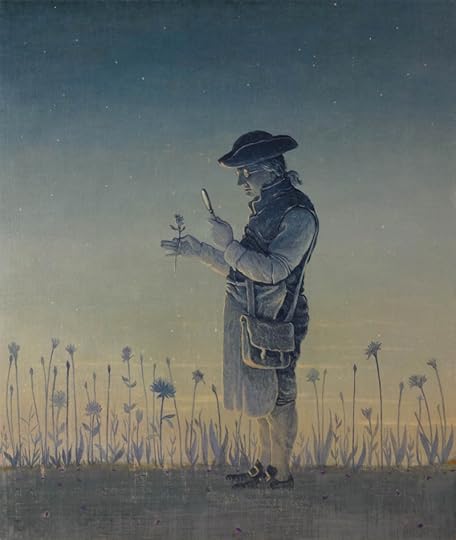
At the end of the essay, he challenges us all:
"If you are reading this, and you're a writer, and you, like me, are gripped with despair, when you think you might stop: Speak to your dead. Write for your dead. Tell them a story. What are you doing with this life? Let them hold you accountable. Let them make you bolder or more modest or louder or more loving, whatever it is, but ask them in, listen, and then write. And when war comes -- and make no mistake, it is already here -- be sure you write for the living too. The ones you love, and the ones who are coming for your life. What will you give them when they get there? I tell myself I can't imagine a story that can set them free, these people who hate me, but I am writing precisely because one did that for me. So I always remember that, and I write even for them."
Alexander Chee's essay can be found in his new collection How to an Autobiographical Novel, which is simply stunning. I cannot recommend it highly enough. You can also read an earlier, shorter version of the essay online here, in Paris Review.
The art today is by Scottish painter Barry McGlasham, whose new exhibition, "The Line of Beauty," opens at the John Martin Gallery in London on November 2nd.
"Raised in Aberdeen, on Scotland's north-east coast, he studied painting ther at Grays School of Art, gradulating with first class honours in 1996. He then taught at Grays for seven years, until leaving to focus on painting full time. In 2001, he traveled throughout America on a Royal Scottish Academy scholarship; it is a country that continues to fascinate him and to influence his work.
To see more of his art, please visit his website, the John Martin Gallery, and his beautiful Glass Mountain catalogue. I also recommend Barry's Instagram page, where he posts drawings, paintings in progress, and wonderfully atmospheric photographs of his working studio.
* Jeanette Winterson has said: "I think every work of art is an act of faith, or we wouldn't bother to do it. It is a message in a bottle, a shout in the dark. It's sayin, 'I'm here and I believe that you are somewhere and that you will answer if necessary across time, not necessarily in my lifetime.' "
The passage quoted above is from "On Becoming an American Writer" by Alexander Chee, published in How to an Autobiographical Novel (Mariner Books, 2018). I recommend reading the full essay (as well as the rest of this excellent book). All rights to the text and imagery above reserved by the author and artist.
October 9, 2018
Into the woods
I had a post half-written for you today, but gremlins in the wires conspired against it: first problems with my blogging platform and just when it was up and running again, the power went out across our village, and stayed out for a good long time. At which point I gave up on tech altogether, threw my notebooks into a bag, and headed for the woods with Tilly.
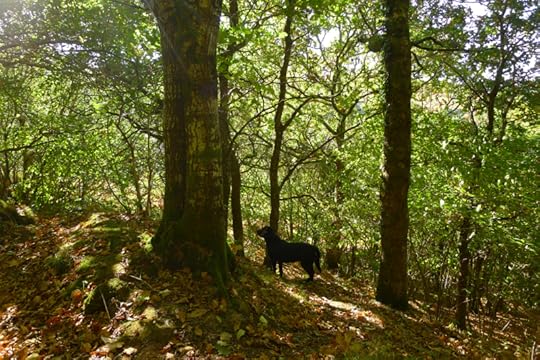
"What keeps you going," writes Barbara Kingsolver, "isn't some fine destination but just the road you're on, and the fact that you know how to drive. You keep your eyes open, you see this damned-to-hell world you got born into, and you ask yourself, 'What life can I live that will let me breathe in out and love somebody or something and not run off screaming into the woods?' "
Today I ran off into the woods, but tomorrow I'll be back. Goodnight, all.
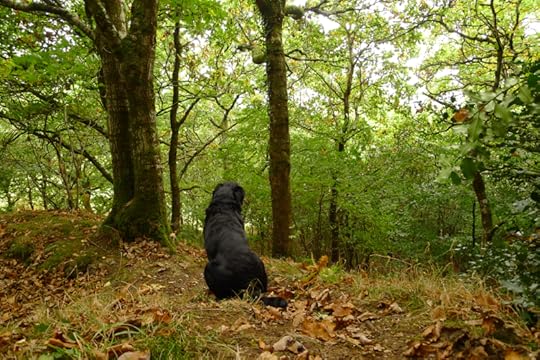
October 8, 2018
Tunes for a Monday Morning
Today's post goes out to American women, who have had a very rough couple of weeks. I'm with you, sisters, I'm with you; and with the men and nonbinary folk who stand tall beside us. Today and always.
Above: "Resilient" by Rising Appalachia (sister Leah and Chloe Smith), from the American south. The gorgeous song is the title track of their new album, recently released, and the gorgeous video was shot by Alex Allaux.
Below: "Happening Again" by Danish singer/songwriter Agnes Obel, from her third album, Citizen of Glass (2016).
Above: "Wisely and Slow" by The Staves (sisters Jessica, Camilla and Emily Staveley-Taylor), from Watford in Hertfordshire, England. The song is from their first album, Dead & Born & Grown (2012).
Below: "Soaking in the Bathtub" by The Poozies, an all-women group making music since 1991. The band's current line-up is Mary Macmaster, Eilidh Shaw, Sarah McFadyen, and Tia Files, all from Scotland. The song, written by McFadyen, was released as a single last month.
Above: "Game to Lose" by the American folk & bluegrass group I'm With Her (Sara Watkins, Sarah Jarosz, and Aoife O'Donovan). The song appears on See You Around (2018), their first album as a trio. The video was shot by Gen��a Gaudet.
Below: "Done" by Canadian singer/songwriter Frazey Ford (a founding member of The Be Good Tanyas). The song is from her second solo album, Indian Ocean (2014), but it could have been written for today.
Stay strong. Hang on to your joy.
The images above are by Gertrude K��sebier (1852 - 1934) and Dorothea Lange (1895-1965), pioneers of American photography. Follow the links to see more of their work. I also highly recommend Erin May Kelly's fine, fierce poem "Little Girls Don't Stay Little Forever" over on the BBC's The Social site (with a trigger warning for abuse issues). I also recommend Rebecca Traister's timely new book, Good & Mad: The Revolutionary Power of Women's Anger (Simon & Schuster, 2018).
October 6, 2018
Autumn in Chagford
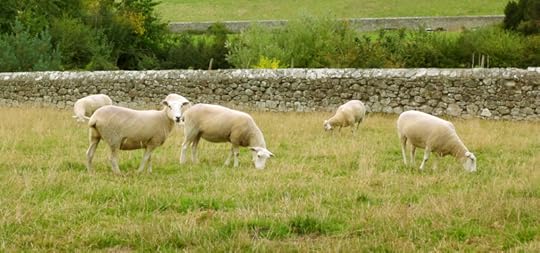
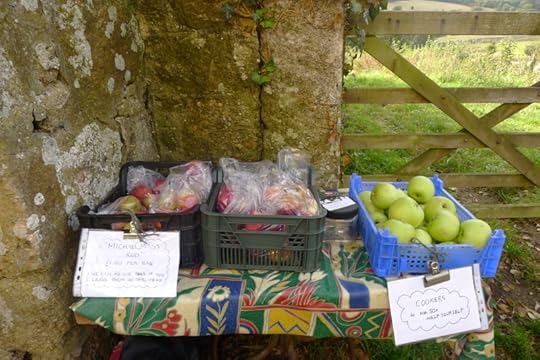
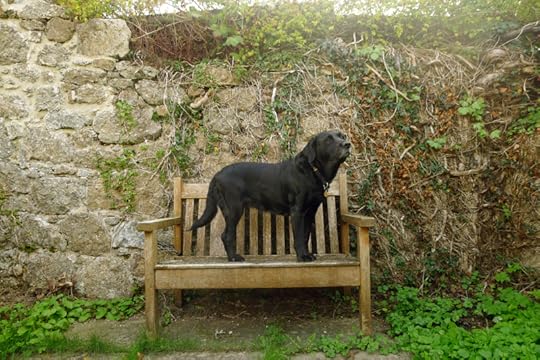
The poem in picture captions is from Two Moons by Mary Oliver (Little, Brown & Co., 1972); all rights reserved by the author.
October 5, 2018
I Shall Go Into a Hare....
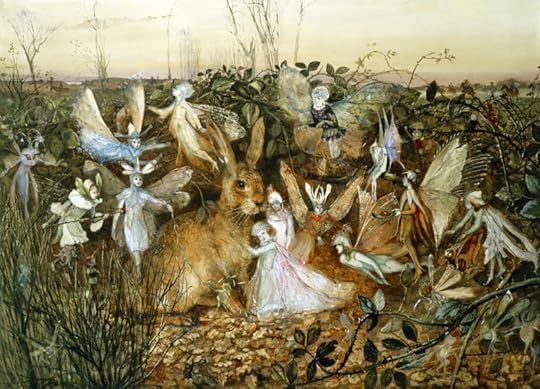
Last week I took a train up north for the second meeting of the Modern Fairies project. The whole thing had started back in July with a gathering of the Fairy team in Oxford, then we'd worked from our various parts of the country (England, Scotland, Wales, Northern Ireland) until it was time to meet up again. Now we were coming to the University of Sheffield with a wide range of works-in-progress to share: songs and poems and other creations exploring the many facets of fairy lore. We brought tales of shape-shifters and shadow hauntings....of strange happenings at the edge of perception...of the fractured nature of fairy time and the power of magic in the old wild places...of white ravens, green children, witch hares, otter brides, and ghostly hounds crumbling into the dust...and of fairies infesting the planes of World War II and the depths of the internet.
"The earliest storytellers were magi, seers, bards, griots, shamans," writes novelist Ben Okri. "They were, it would seem, as old as time, and as terrifying to gaze upon as the mysteries with which they wrestled. They wrestled with mysteries and transformed them into myths which coded the world and helped the community to live through one more darkness, with eyes wide open and hearts set alight."
In this project we're looking at Britain's fairy tradition, seeing what such stories have to tell us today. To do our work well, perhaps we must all become griots or shamans ourselves, steeped in Mystery, letting the old tales speak through us as they will.
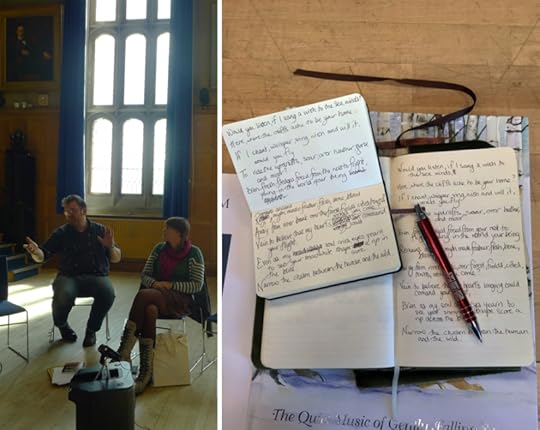
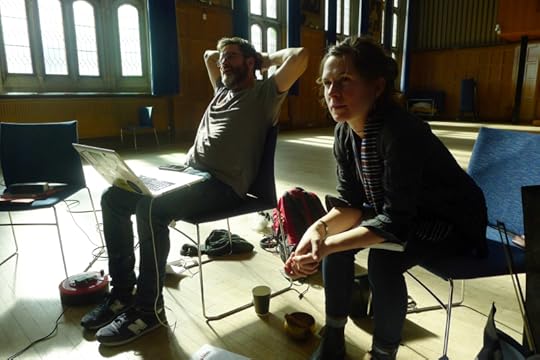
Music is one of the Mysteries to me. I love folk music in all its forms, and yet I am not a musician myself -- so in Sheffield I listen, spell-bound and enchanted, as music rises from the corners of the workspace. New songs are born...take shape...take flight...
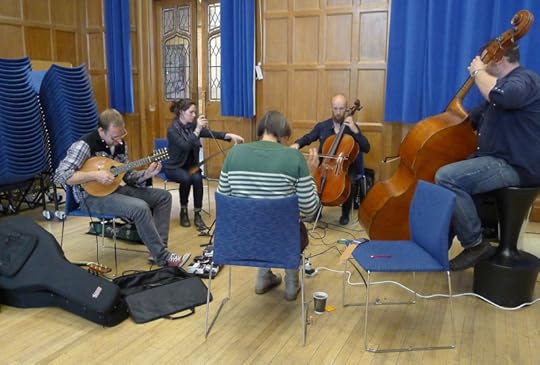
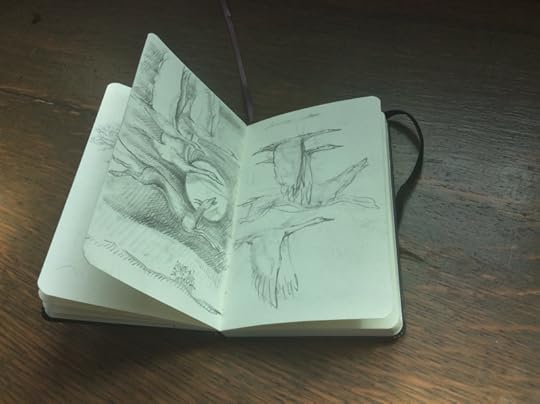
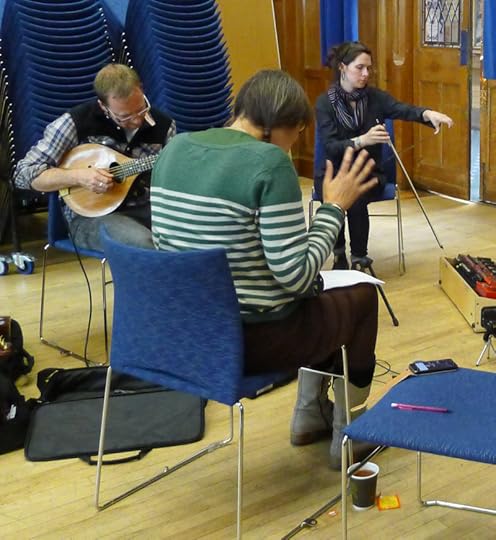
...conjured by cello, viola, bass and banjo...by mandolin, squeezebox, saw and voice.
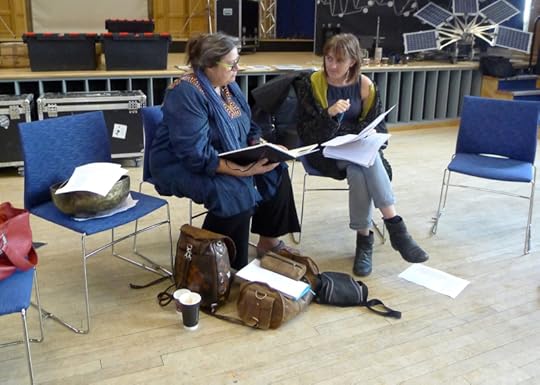
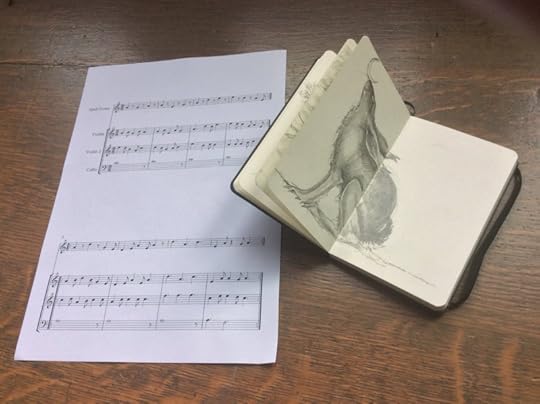
I've never worked on a project like this before. I've collaborated many times, yes, but always with fellow writers and illustrators in the publishing field, never with artists from such a wide range of backgrounds.
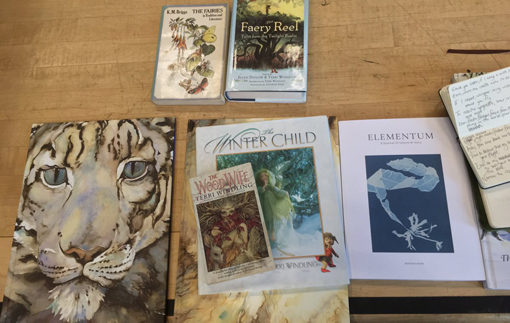
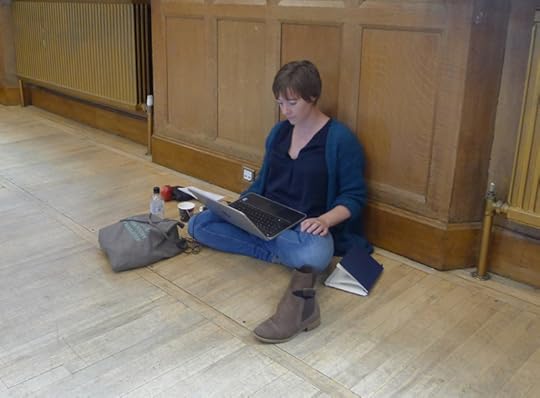
It's an interesting brief, but a daunting one, pushing me out of my comfort zone. I know how to write a book, a story, an essay...but a song? a spoken word narrative?
I am married to a theater director, so I know very well that performative arts are very different than the literary arts, created in a very different way. I have to ignore my usual working methods, throw out all my preconceived ideas and approach the work (as my husband likes to say) with a "beginner's mind." I am walking in unknown territory...a perfect metaphor for walking into Faerie itself.
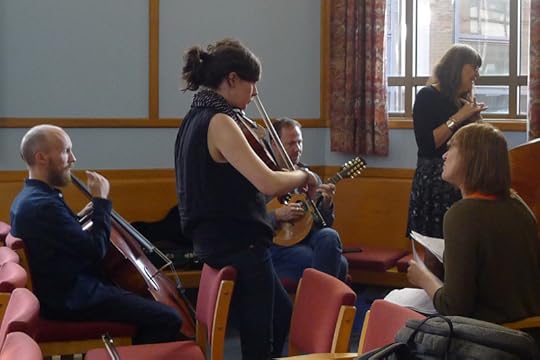
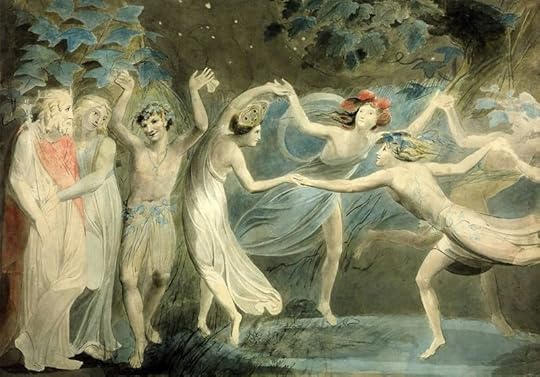
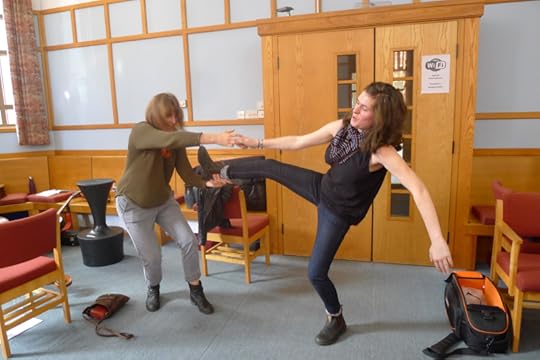
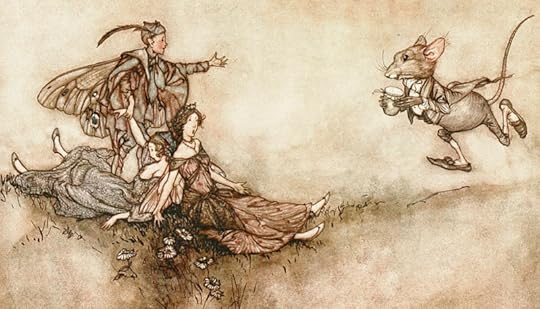
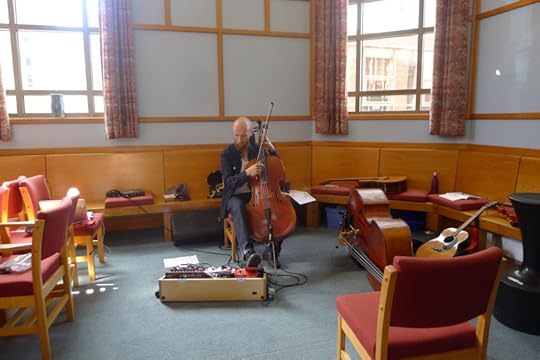
I'm reminded of these words by Ursula Le Guin about magical tales in all their forms:
"Fantasy is a different approach to reality, an alternative technique for apprehending and coping with existence," she said. "It is not anti-rational, but para-rational; not realistic but surrealistic, a heightening of reality. In Freud's terminology, it employs primary, not secondary process thinking. It employs archetypes, which, as Jung warned us, are dangerous things. Fantasy is nearer to poetry, to mysticism, and to insanity than naturalistic fiction is. It is a wilderness, and those who go there should not feel too safe."
No, I don't feel safe. Why should I feel safe? The Faerie Realm is a dangerous one. But I do feel inspired, and awed by the creativity around me. I am happy to be on this journey.
The creativity produced by this team could, I swear, power the lights of the city. Our days in Sheffield fairly crackle with energy, with ideas emerging, shape-shifting, coalescing into song, art, and story. I find that I keep turning to my companions to say: I don't want the week to end.
But it does end, of course. On the final eve, we share some of our work-in-progress with a small audience in a Spiegeltent at The Festival of the Mind...and this is a bit nerve-wracking too. We're all used to presenting work in completed form: a book, CD, a canvas or show, honed and polished. A work-in-progress is a rough, raw thing. What on earth would an audience make of it all?
The fairies are clearly with us that night, and every one of them is in Trickster mode: microphones don't work, other tech goes wrong...but none of that matters in the end. When Ewan sings of fairy shadows, and Lucy of the shifting properties of time, and Marry of the Green Children legend, and Fay of turning from woman to hare, the old stories come to life again. Perhaps they had never really died.
And so, the journey continues. Our next meeting is in Newcastle in January, then we're aiming for a public presentation (of some kind) at The Sage in Gateshead in late April. If you'd like to keep up the project's evolution, please visit the Modern Fairies website and blog, Facebook page, and Twitter page. I'll post on its progress here too.
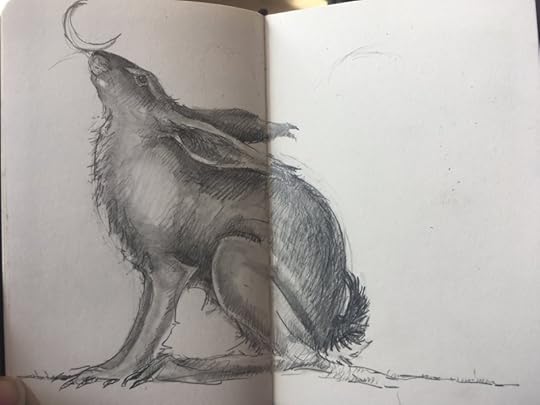
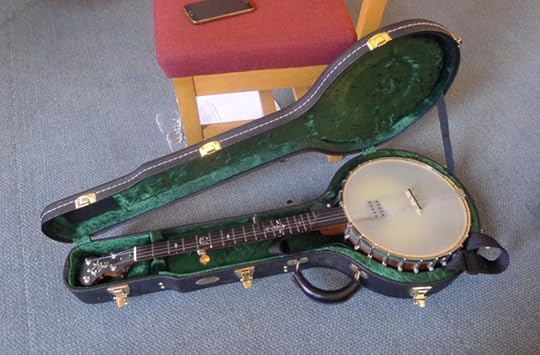
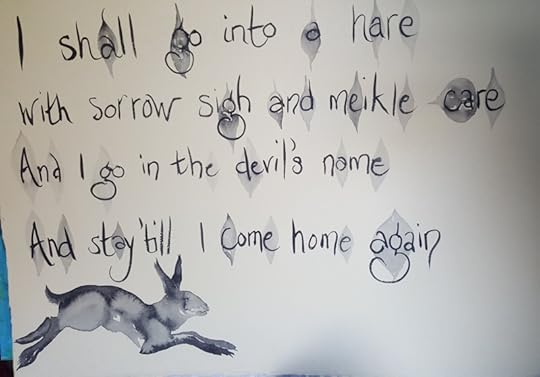
The Modern Fairies team is: Fay Hield, Carolyne Larrington, Lucy Farrell, Sarah Hesketh, Jim Lockey, Ewan MacPherson, Jackie Morris, Barney Morse Brown, Ben Nicholls, Marry Waterson, and me, all pictured here -- plus Patience Agbabi and Inge Thomson, who could not join us in Sheffield. Please follow the links to learn more about their work.
Credits: The black-and-white art and the notebooks are by Jackie Morris. The fairy paintings are by John Anster Fitzgerald (1819-1906), William Blake (1757-1827), and Arthur Rackham (1867-1939). The photographs were taken by me, Jackie Morris, Fay Hield, Marry Waterson, and others on the Modern Fairies team. They are identified in the picture captions. (Run your cursor over the images to see them.) All rights to the imagery and text pictured here are reserved by their makers.
October 4, 2018
Words to live by
''Let us keep courage and try to be patient and gentle. And let us not mind being eccentric, and make distinction between good and evil.'' - Vincent van Gogh
If you haven't yet read The Letters of Vincent Van Gogh, I highly recommend them. I have the old Penguin edition, edited by Ronald de Leeuw; but if you can afford the six-volume Vincent Van Gogh: the Letters, published by Thames & Hudson, it's extraordinary.
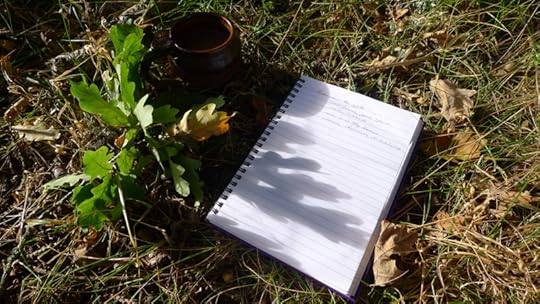
The lovely art above is a card made by my friend Michele Campling, who is a fabric artist here in Devon. The poem in the picture caption is from Selected Poems by Barbara Guest (Sun & Moon Press, 1995). All rights reserved by the author and artist.
October 2, 2018
Oh, crumbs
Well, I managed to avoid to the cold that was going around in Sheffield, and then came home and caught one from this dear man. Tilly is under the weather again herself; what a pair we are. I'll be back in the studio as soon as I can. I'm hoping it will be a quick one.
September 30, 2018
Tunes for a Monday Morning
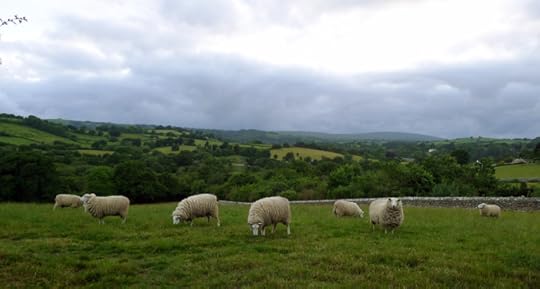
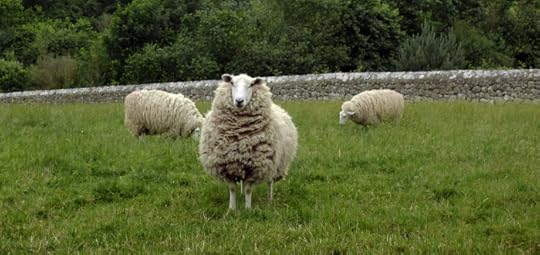
I was away with the Modern Fairies last week, which I'll tell you more about in tomorrow's post. Today, I'd like to kick off the morning with music by some of my colleagues on the Modern Fairies team....
Above: "I'd Rather Be Tending My Sheep," sung by Lucy Farrell and her three fellow-members of The Furrow Collective: Rachel Newton, Emily Portman, and Alasdair Roberts. Lucy found this song in Ruth L. Tongue���s book, The Chime Child, about folksingers and songs in Somerset. (More information here.) The animated video was created by Marry Waterson, another member of the Modern Fairies group.
Below: Lucy sings the traditional ballad "Polly Vaughn" at the Square Chapel Arts Centre in Halifax, West Yorkshire. The song appeared on The Furrow Collective's second album, Wild Hog (2016). Their third album can be pre-ordered here; and Lucy is at work on songs for a solo album, forthcoming next year.
Above: a wonderful rendition of "Raggle Taggle Gyspy" (Child Ballad #200) sung by Fay Hield: folk musician, scholar, and the fearless leader of Modern Fairies. Fay has performed with The Full English, BACCApella, The Witches of Elswick, and her own fine band, The Hurricane Party. I highly recommend her three solo albums (Orefo, Looking Glass, and Old Adam), and her TED talk, "Why aren't we all folksingers?"
We heard Inge Thomson's latest album two weeks ago: Northern Flyway, inspired by birds in nature and myth. Here is another song from the album, "No Barriers, No Borders," sung by Inge. She also performs with Drop the Box, Crows' Bones, and the Karine Polwart Trio; and she has released two haunting solo albums (Shipwrecks & Static and Da Fishing Hands) rooted in her love of the natural world and her upbringing in the Shetlands.
Above: "Death of a Gull" by Ben Nicholls' genre-busting trio, Kings of the South Seas, with Richard Warren and Evan Jenkins. The song is from the group's second album, Franklin, a glorious cycle of ballads inspired by Lord Franklin's doomed expedition to the Arctic in 1845. (For more information, I recommend the "Making of the Album" video here.) Ben has also performed with The Full English, the Seth Lakeman Band, and the Nadine Shah Band.
Below: "Martha" by Duotone: cellist, composer, and multi-instrumentalist Barney Morse-Brown. Barney has performed with Maya Youseff, Birdy, Jackie Oates, Eliza Carthy, Chris Wood, The Imagined Village and others, in addition to his distinctive solo work. The exquisite piece below is from Duotone's fourth album, A Life Reappearing.
Above: "Two Wolves," written and sung by Marry Waterson, with guitarist David A. Jaycock. Marry is a poet and artist as well as a singer, using the voice as her primary instrument. ("I sing my tales into existence," she says.) She has collaborated with many musicians -- including other members of the Waterson-Carthy folk clan -- and released four albums of bewitching songs: Death had Quicker Wings Than Love and Two Wolves with Jaycock; Hidden and The Days That Shaped Me with Oliver Knight.
Below: "Sophrsyne," written and sung by mutli-instrumentalist Ewan MacPherson, with Lauren MacColl on fiddle. (Sophrosyne is an ancient Greek concept defined as the quality of wise moderation, "knowing the limits which nature fixes for human conduct and keeping within them.") Ewan is a founding member Salt House (featured in a previous post), Firbo, RoughCoastAudio, and the MMH Trio; he's performed with the Battlefield Band, Breabach, Malinky, Ranarim, Shooglenifty, Salsa Celtica, The Treacherous Orchestra, and numerous other groups and musicians; and he's also recorded two fine solo albums, Norther and Fetch!, which I highly recommend.
September 28, 2018
Breathing our way to courage
From an interview with Terry Tempest Williams in Guernica magazine:
"Finding beauty in a broken world is creating beauty in the world we find. For me, we find this beauty through relationships, with people in place with other species. Integrity is the word that comes to mind. Integrity and presence.
"A friend of mine said to me not long ago, 'Terry you are married to sorrow.' I looked at him and said, 'No, I am not married to sorrow, I just choose not to look away.' To not avert our eyes to suffering is to trust the power of presence. Joy emerges through suffering. Suffering is a component of joy. Whether we are sitting with a loved one dying or witnessing dolphins side-by-side watching the oil burning in the Gulf of Mexico, to be present with the world is to be alive. I think of Rilke once again, 'Beauty is the beginning of terror.' We can breathe our way toward courage.
"When we were working in the village of Rugerero with Rwandan women who had lost everything from war, I saw a light in their eyes return when their children began picking up paintbrushes and painting the walls of their homes. Joy entered in. Creativity ignited a spark. In that moment, I saw that art is not peripheral, beauty is not optional, but a strategy for survival.
"In Rwanda, USAID was saying, 'How can you dare to paint a village when people are hungry?' But beauty feeds a different kind of hunger. And when there���s so much ugliness in the world that we���ve created, I think it���s essential, that whether it���s pausing in a garden with a trowel in hand, or walking up to Delicate Arch in Arches National Park, or picking up a paintbrush with children, our soul seizes beauty and is sustained.
"Finding beauty in a broken world is acknowledging that beauty leads us to our deepest and highest selves. It inspires us. We have an innate desire for grace. It���s not that all our definitions of beauty are the same, but when you see a particular heron in the bend in the river, day after day, something in your soul stirs. We remember what it means to be human."
This post first appeared on Myth & Moor in November, 2016, not long after the American presidential election. This week, as the results of that election spin out, putting the judicial integrity of the Supreme Court at risk, it seems a good time to re-visit it. The quote above comes from a TTW interview by Devon Fredericksen in Guernica magazine (August, 2013). The quotes in the picture captions are from the same interview, as well as an interview by Lorraine Berry on the Talking Writing blog (June, 2013). All rights reserved by the authors.
September 27, 2018
Dark Beauty
Having grown up amidst violence and ugliness, I have long dedicated my life to kindness, compassion and beauty: three old-fashioned ideals that I truly believe keep the globe spinning in its right orbit. William Morris, artist and socialist, considered beauty to be as essential as bread in everyone's life, rich and poor alike. It is one of the truths that I live by. Beauty in this context, of course, is not the shallow glamor peddled by Madison Avenue; it's a quality of harmony, balance and interrelationship: physical, emotional, and spiritual all at once. The Din�� (Navajo) called this quality h��zh����, embodied in this simple, powerful prayer: With beauty before me may I walk. With beauty behind me may I walk. With beauty below me may I walk. With beauty above me may I walk. With beauty all around me may I walk
We are living through a time when dark, violent forces have been released, encouraged, and applified, on both sides of the Atlantic: by Trump in America, the Brexiteers here, Le Pen in France and too many others eager to extend its reach. I contend that in the face of such ugliness we need the beacon of light that is beauty more than ever -- and I hold this belief as someone who has not lead a sheltered life, nor is unaware of the true cost of violence on body and soul. It is because of the scars that I carry that I know that beauty, and art, and story, are not luxuries. They are bread. They are water. They sustain us.
And yet, like many of the writers and artists I know, I too have been struggling with how to move forward: not because I question the value of the work that we're doing here in the Mythic Arts/Fantasy Literature field (addressed in this previous post), but because public discussion, on Left and Right alike, has become so dogmatic, so scolding and contentious, and so mired in black-and-white thinking. In such an atmosphere, nuance and complexity sink like stones; and the idea that there are things that still matter in addition to our political crisis is damned in some quarters as trivial, escapist, or the realm of the privileged: labels which I do not accept.
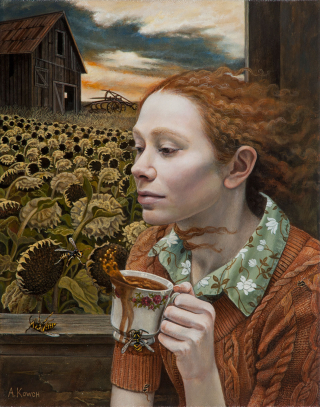 Here on Myth & Moor, I advocate for the creation of lives rich in beauty, nature, art, and reflection -- but this is by no means a rejection of engagement, action, and fighting like hell against facism. Myth speaks in a language of paradox, and so all of us who work with myth are capable of holding seemingly opposite truths in balance: We'll fight and retreat. We'll cry loudly for justice (in our various ways) and we'll have times of soul-healing silence. We'll look ugliness directly in the face, unflinching, and we will walk in beauty.
Here on Myth & Moor, I advocate for the creation of lives rich in beauty, nature, art, and reflection -- but this is by no means a rejection of engagement, action, and fighting like hell against facism. Myth speaks in a language of paradox, and so all of us who work with myth are capable of holding seemingly opposite truths in balance: We'll fight and retreat. We'll cry loudly for justice (in our various ways) and we'll have times of soul-healing silence. We'll look ugliness directly in the face, unflinching, and we will walk in beauty.
"Beauty is not all brightness," wrote the late Irish poet/philosopher John O'Donohue. "In the shadowlands of pain and despair we find slow, dark beauty. The primeval conversation between darkness and beauty is not audible to the human ear and the threshold where they engage each other is not visible to the eye. Yet at the deepest core they seem to be at work with each other. The guiding intuition of our exploration suggests that beauty is never one-dimensional or one-sided. This is why even in awful circumstances we can still meet beauty. A simple instance of this is fire. Though it may be causing huge destruction, in itself, as dance and color of flame, fire can be beautiful. In human confusion and brokeness there is often a slow beauty present and at work.
"The beauty that emerges from woundedness," O'Donohue noted, "is a beauty infused with feeling: a beauty different from the beauty of landscape and the cold beauty of perfect form. This is a beauty that has suffered its way through the ache of desolation until the words or music emerged to equal the hunger and desperation at its heart....The luminous beauty of great art so often issues from the deepest, darkest wounding. We always seem to visualize a wound as a sore, a tear on the skin's surface. The protective outer layer is broken and the sensitive interior is invaded and torn. Perhaps there is another way to imagine a wound. It is the place where the sealed surface that keeps the interior hidden is broken. A wound is also, therefore, a breakage that lets in light and a sore place where much of the hidden pain of a body surfaces."
"Where woundedness can be refined into beauty," he adds, "a wonderful transfiguration takes place. For instance, compassion is one of the most beautiful presences a person can bring to the world and most compassion is born from one's own woundedness. When you have felt deep emotional pain and hurt, you are able to imagine what the pain of another is like; their suffering touches you. This is the most decisive and vital threshold in human experience and behavior. The greatest evil and destruction arises when people are unable to feel compassion. The beauty of compassion continues to shelter and save our world. If that beauty were quenched, there would be nothing between us and the end-darkness which would pour in torrents over us."
So please, fellow artists and art lovers, keep seeking out, spreading, and making beauty. Don't stop. We all need you. I need you.
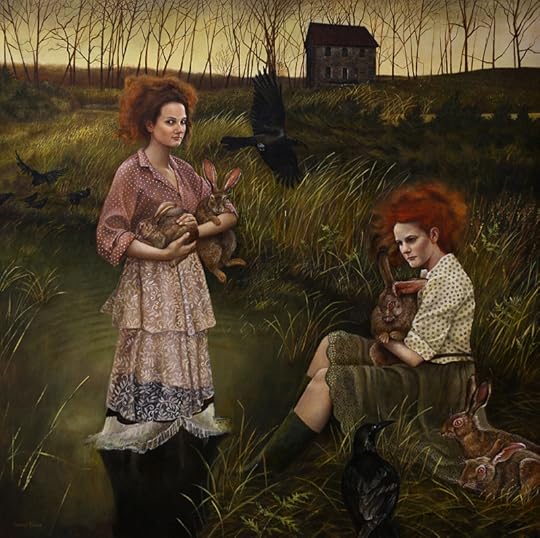
The art today is by Andrea Kowch, an award-winning American painter based in Michigan. Kowch finds inspiration in the emotions and experiences of daily life in the rural Midwest -- resulting, she says, in "narrative, allegorical imagery that illustrates the parallels between human experience and the mysteries of the natural world. The lonely, desolate American landscape encompassing the paintings��� subjects serves as an exploration of nature���s sacredness and a reflection of the human soul, symbolizing all things powerful, fragile, and eternal. Real yet dreamlike scenarios transform personal ideas into universal metaphors for the human condition, all retaining a sense of vagueness to encourage dialogue between art and viewer.���
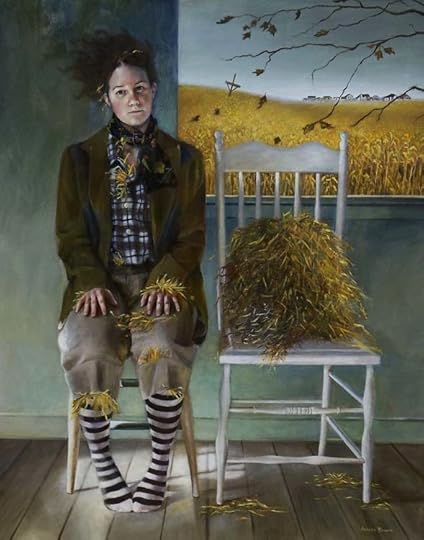 The passage above is from Beauty: The Invisible Embrace by John O'Donohue (HarperCollins, 2004), all rights reserved by the author's estate. All rights to the art reserved by Andrea Kowch. A related post from 2014: "The Beauty of Brokeness."
The passage above is from Beauty: The Invisible Embrace by John O'Donohue (HarperCollins, 2004), all rights reserved by the author's estate. All rights to the art reserved by Andrea Kowch. A related post from 2014: "The Beauty of Brokeness."
Terri Windling's Blog
- Terri Windling's profile
- 712 followers


